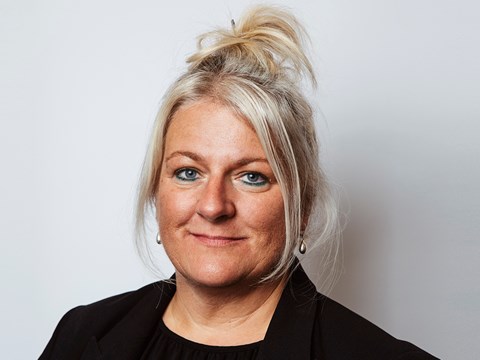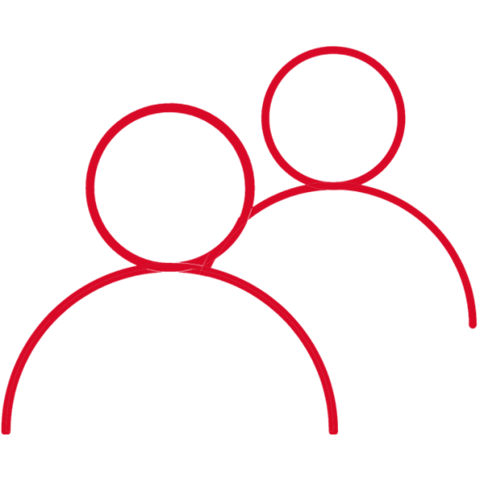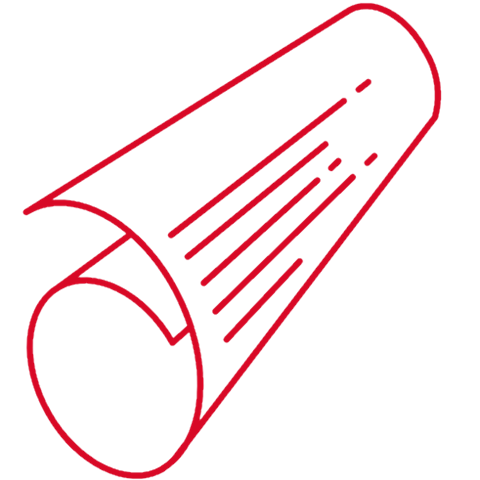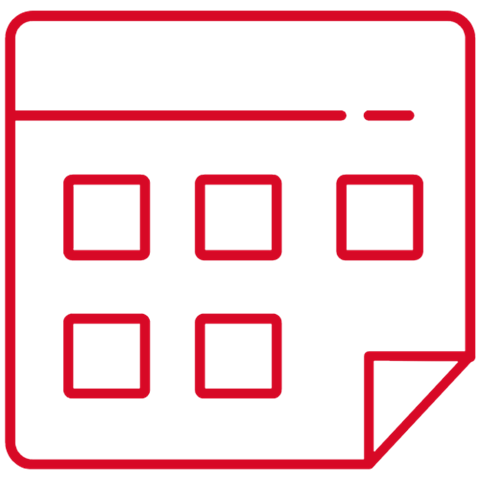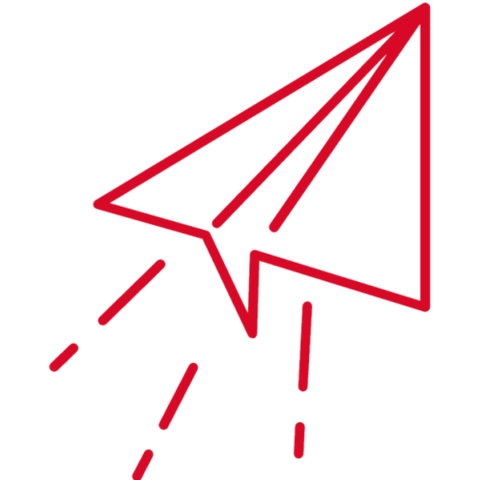Spoiler Alert: Not Everything NEEDS collaboration!
15 Apr 2025
Is it me, or is collaboration becoming one of the most overused words in our industry? Sharing the spotlight with integrated, brave, ambitious clients, and a few other marketing buzzwords that have become the default way to describe certain approaches or issues. And while I first spotted this “trend” a couple of years ago, it seems to me to be growing. Now we have true collaboration, genuine collaboration, relentless collaboration…(feel free to add)
It strikes me that this one-size-fits-all all idea that collaboration is the answer to everything needs a rethink, a relaunch, a reconsideration. Why? Three main reasons:
1. The Opportunity Is Now
Marketing is in flux. The landscape is shifting faster than ever - new channels, new technology, new expectations, and what seems like constant client team restructuring. It will be of no surprise to any client or agency reading this article that over half of marketing teams have restructured in the past year, rising to 70% in larger businesses (AAR Evolution of the Marketing Operating Model Research, 2025). Even more change is on the horizon.
One of the main drivers? Process inefficiencies. Over 70% of marketing teams say these inefficiencies hold them back from delivering their best work (WFA, 2023). Unclear roles and ways of working are among the top frustrations in client-agency relationships (AAR, EMOM 2025), leading to misalignment, slower projects, duplication, and ultimately draining energy.
While restructuring can be incredibly useful in realigning marketing functions, the greater opportunity is to challenge, change, and implement differentiated ways of working. That’s crucial if we are to truly deliver the transformation everyone seeks, the opportunities offered by new tech, platforms, GenAI and the demands on a modern marketing function.
Now is the moment for marketers and agencies to rethink not just what they do, but how they do it. Because process isn’t just an operational necessity - it’s a competitive advantage. According to McKinsey, companies that continuously optimise their marketing operating model see up to a 25% increase in efficiency and effectiveness.
2. Collaboration Isn’t Easy
But if there’s one word that dominates agency-client relationships and ways of working discussions, it’s collaboration. It’s in briefs, workshops, creds decks, and every kick-off meeting. Ever sat in a meeting where everyone nodded at “we need to collaborate better,” but walked away with no clue what that actually meant in reality? You’re not alone.
Despite the desire for collaboration, 90% of client-agency assessments ask for more collaboration - yet, when probed, often really mean earlier cooperation (AAR, 2024). And even more concerning, 80% of clients believe that increased collaboration will naturally mean more people being involved, resulting in slower delivery and higher costs (AAR, 2024).
When used at the right time and in the right way, collaboration is magic. On the one hand, it's about identifying what needs people and teams to collaborate on. Someone’s ‘slow hunch’ that needs time and space to be built upon, that diversity of voices that sparks unexpected ideas, builds trust to explore, and delivers breakthrough work. On the other hand, it’s about how to manage it once it has started. Some of the best ideas happen when people, teams, functions, internal and external, clients and agencies truly collaborate - challenging each other, embracing positive friction, iterating in real-time, and pushing thinking further.
But real collaboration is messy, time-intensive, and resource-heavy. It needs trust, psychological safety, and the right culture and environment to be successful. It shouldn’t be the answer to everything. And let's face it - we wouldn't all be talking about it so much if it was easy. It’s not.
And in a world of change fatigue and burnout, collaboration overload isn’t helping anyone. But that's a whole different topic and conversation and one my colleague Tony Spong shines a light on here in The Collaboration Paradox. And if collaboration IS identified as the right solution then a whole load of things become critical to consider and factor in.
3. There Are Alternatives
The opportunity as I see it is to embrace this period of change to seek out and embrace alternatives. How do we hit pause on the default collaboration button? What are the other options we could be using that could be better. Better for outcomes, talent, time, and cost?
Here’s my take on some alternatives I see in what I (snappily) call the 4C’s WOW Model: Collaboration, Coordination, Cooperation and Competition. Four different ways of working together with an outline of when to use, when not, an example and watch outs that can connect to RACI, RAPID or any other decision making framework. If after reading you're curious to see the whole framework I’ve developed, just leave your name in the comments below and I will follow up.
1️⃣ Collaboration: AMPLIFIED THINKING.
🔹 Purpose: To generate new ideas and thinking that no individual could create alone.
🔹 When to use: Messy, creative, and best for big, ambiguous problems.
🔹 When NOT to use: When speed, clarity, and structure are needed.
✅ Example: A brand and agency co-creating a new positioning strategy in a workshop.
⚠️ Watch out for: Collaboration burnout - too many voices, endless iterations, decision paralysis.
2️⃣ Coordination: ORCHESTRATED EXECUTION.
🔹 Purpose: To align individual and team efforts for smooth, structured delivery.
🔹 When to use: Large, complex projects that require synchronisation.
🔹 When NOT to use: When flexibility or fresh thinking is needed.
✅ Example: A global new product launch with client teams, creative teams, media teams, commercial and operational teams all aligning on timelines and deliverables.
⚠️ Watch out for: Bureaucracy overload - when process slows down progress instead of enabling it.
3️⃣ Cooperation: SEAMLESS SUPPORT.
🔹 Purpose: To work together smoothly, helping each other succeed vs. agreed tasks / timelines.
🔹 When to use: Parallel work with shared goals, independent goals where alignment is needed.
🔹 When NOT to use: When deep integration or shared ownership is required.
✅ Example: A campaign team, media agency, and social team working separately but feeding into the same integrated campaign.
⚠️ Watch out for: Silos - if cooperation isn’t backed by clear information sharing, things can quickly go off track and lead to rework.
4️⃣ Competition: PRODUCTIVE RIVALRY.
🔹 Purpose: To create constructive tension that sparks different thinking and expands choice.
🔹 When to use: When you need healthy rivalry to push thinking and performance.
🔹 When NOT to use: When unity and shared ownership matter more.
✅ Example: An internal pitch where different agency teams compete to develop the best creative concept.
⚠️ Watch out for: Toxicity - competition should push ideas, not people, to breaking point.
The Role of Communication in All 4 C’s
No matter which ‘C’ you’re operating in, good communication is always essential - it just varies in style, frequency, format and purpose. In collaboration, it’s about open discussion and shared intent. In coordination, it’s about clarity and structure. In cooperation, it’s about keeping teams informed in real time. And in competition, it’s about fair play and transparency. Communication is not a separate way of working model - it underpins them all.
Call It What It Is and Work Smarter
So next time you hear collaboration, ask yourself and your colleagues, internal or external:
✅ What’s the actual job to be done? Are we solving something together or just aligning efforts?
✅ Do we need speed or depth? Is this a “workshop it” moment or a “crack on expert” task?
✅ Who really needs to be involved? Are we adding value or just adding noise?
✅ What’s the risk of over-collaborating? Are we slowing things down instead of speeding them up?
✅ Would a different ‘C’ work better? Are we collaborating when we should be coordinating, cooperating, or even competing? Or indeed a combination of ‘C’’s starting with collaboration and then moving swiftly into cooperation or vice versa.
The best marketing teams don’t just work together. They work together in the right way at the right time to achieve a shared outcome.
What Do You Think? Let’s Build on This Together
Does this resonate? Do you agree, disagree, or have a different take? I’d love to hear how others are thinking about this, both clients and agencies, and how we can make working together work better. Drop a comment or message me. Let’s keep the conversation going.
About The Author
